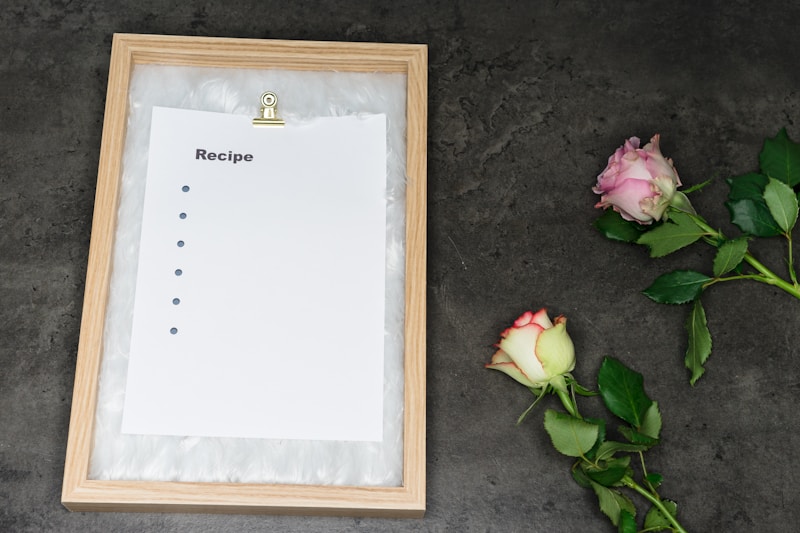Mastering the Art of Prioritizing Wedding Expenses: A Comprehensive Guide
Mastering the Art of Prioritizing Wedding Expenses: A Comprehensive Guide
Planning a wedding can be one of the most exciting and stressful times in a couple’s life. With so many elements to consider, the ability to prioritize wedding expenses effectively is crucial for staying within budget while still achieving your dream event. This article will serve as a detailed guide on how to effectively prioritize wedding expenses, ensuring you have the wedding of your dreams without breaking the bank.
Understanding Your Wedding Budget
Before diving deep into prioritizing expenses, the first step is understanding your overall wedding budget. This budget should include all expected income sources (like contributions from family) and all anticipated costs. It’s essential to be realistic about what you can afford. On average, couples in the United States spend between $20,000 and $30,000 on their wedding, excluding the honeymoon. However, this number can vary widely based on location, venue, and personal preferences.
Key Categories of Wedding Expenses
When creating your budget, categorize your expenses into key areas. Here are the major categories and typical costs associated with them:
| Category | Average Cost |
| Venue | $5,000 - $15,000 |
| Catering | $50 - $150 per person |
| Photography | $1,500 - $3,000 |
| Attire (Bride & Groom) | $500 - $3,000 |
| Flowers & Decorations | $2,000 - $5,000 |
| Entertainment | $1,000 - $4,000 |
| Stationery & Invitations | $400 - $1,000 |
| Miscellaneous | Varies |
Ranking Your Wedding Expenses
Once you've outlined your key categories, it’s time to prioritize those expenses based on importance and personal preferences. Here’s how to evaluate which expenses take precedence:
- Must-Haves: Identify items that are essential to your wedding experience. For many couples, the venue and catering fall into this category.
- Nice-to-Haves: These are elements that would enhance your experience but are not strictly necessary. For instance, elaborate floral arrangements or a photo booth might fit here.
- Extravagant Touches: These are luxury options that can significantly drive up costs. While they may be appealing, it’s crucial to assess whether they fit within your budget.

Creative Strategies for Cost Management
As you work to prioritize your expenses, consider leveraging creative strategies to manage costs effectively:
1. DIY Components
Engaging in do-it-yourself projects can save you a significant amount. For example, creating your own invitations or centerpieces can reduce costs while adding a personal touch to your wedding. Be sure to allocate your time wisely, as DIY projects can become time-consuming.
2. Off-Peak Season Weddings
Consider hosting your wedding during the off-peak season (typically late fall and winter in places like the U.S.). Vendors are often more flexible, and you may score discounts on services and venues.
3. Prioritizing Guest List
One of the most effective ways to control expenses is by managing your guest list. Sticking to close friends and family can drastically reduce catering and venue costs. Consider an intimate elopement with a larger gathering for a later date to celebrate.
Real Stories: Couples Who Successfully Prioritized Wedding Expenses
To illustrate the effectiveness of expense prioritizing, here are a few success stories:
Case Study 1: Lisa and Mark wanted a classic wedding in a historical venue. They prioritizing their venue expense, allocating 50% of their budget to it. By reducing guest count, they were able to compromise on flowers and decorations without sacrificing quality.
Case Study 2: Sarah and Jake opted for a beautiful outdoor wedding in a park and utilized friends’ talents for photography and music. They saved significantly by focusing on catering and minimal decor while enjoying a memorable experience.
Conclusion: The Importance of Smart Wedding Spending
Prioritizing wedding expenses is a vital aspect of the planning process that cannot be overlooked. By understanding your budget, ranking your needs, and considering creative alternatives, you can not only achieve a wonderful wedding experience but also ensure financial wellbeing post-wedding. Remember, spending wisely doesn't mean sacrificing quality or uniqueness; it’s about making informed decisions and cherishing your special day.
As you embark on this journey, keep these key takeaways in mind:
- Establish a clear budget that reflects your needs and desires.
- Recognize which aspects of your wedding truly matter to you as a couple.
- Be open to creative solutions to make the most of your finances.
The journey of planning your wedding is just beginning. Use these insights to navigate through the expenses effectively, and you'll be well on your way to a beautiful wedding day!
